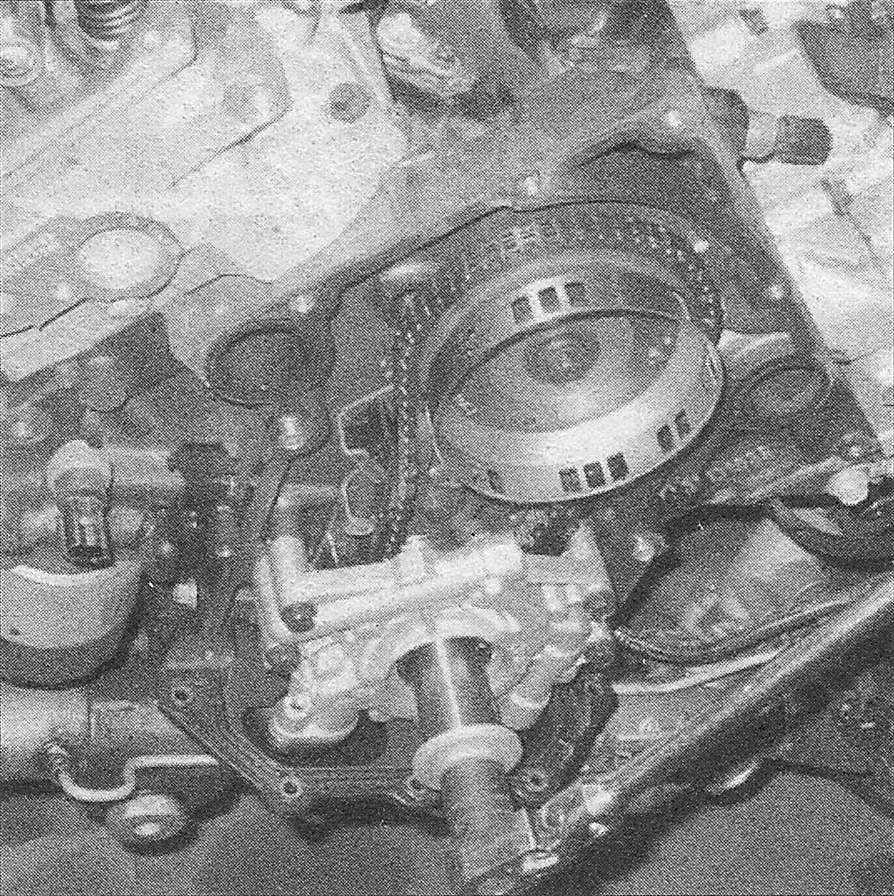Top Dead Center (TDC) for number one piston – locating
1. Top Dead Center (TDC) is the highest point in the cylinder that each piston reaches as it travels up-and-down when the crankshaft turns. Each piston reaches TDC on the compression stroke and again on the exhaust stroke, but TDC generally refers to piston position on the compression stroke.
2. In order to bring any piston to TDC, the crankshaft must be turned using a breaker bar and socket on the vibration damper bolt. When looking at the front of the engine, normal crankshaft rotation is clockwise.
3. Disconnect the cable from the negative terminal of the battery (see Engine electrical systems).
4. Remove one of the number 1 spark plugs, preferably the closest to the front of the engine, then thread a compression gauge into the spark plug hole. Turn the crankshaft with a large socket and breaker bar attached to the large bolt that is threaded into the vibration damper (see illustration). When compression registers on the gauge, the number one piston is beginning its compression stroke. Stop turning the crankshaft and remove the gauge.
3.4 Use a breaker bar and deep socket to rotate the crankshaft
5. Install a long dowel into the number one spark plug hole until it rests on top of the piston crown. Continue rotating the crankshaft slowly until the dowel levels off (piston reaches top of travel). This will be approximate TDC for number 1 piston.
6. These engines are not equipped with external components (vibration damper, flywheel, timing hole, etc.) that are marked to identify the position of number 1 TDC. Therefore the only method to double-check the exact location of TDC number 1 on Hemi engines is to remove the timing chain cover to access the timing chain sprockets (Timing chain cover, chain and sprockets – removal, inspection and installation), or with the use of a degree wheel on the crankshaft vibration damper and a positive stop threaded into the spark plug hole, as you would use in the process of degreeing a camshaft (this procedure is described in detail in the Haynes Chrysler Engine Overhaul Manual).
